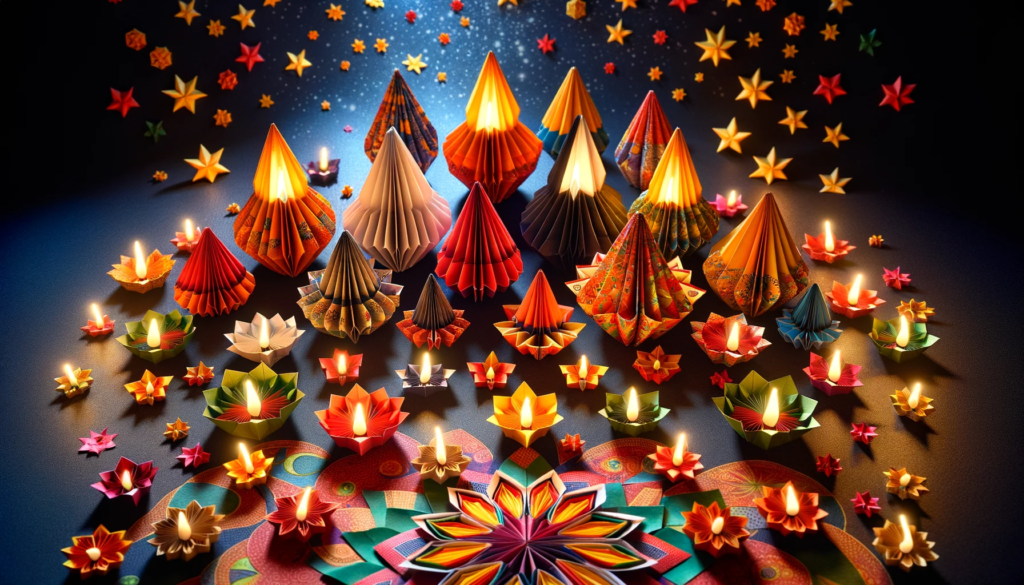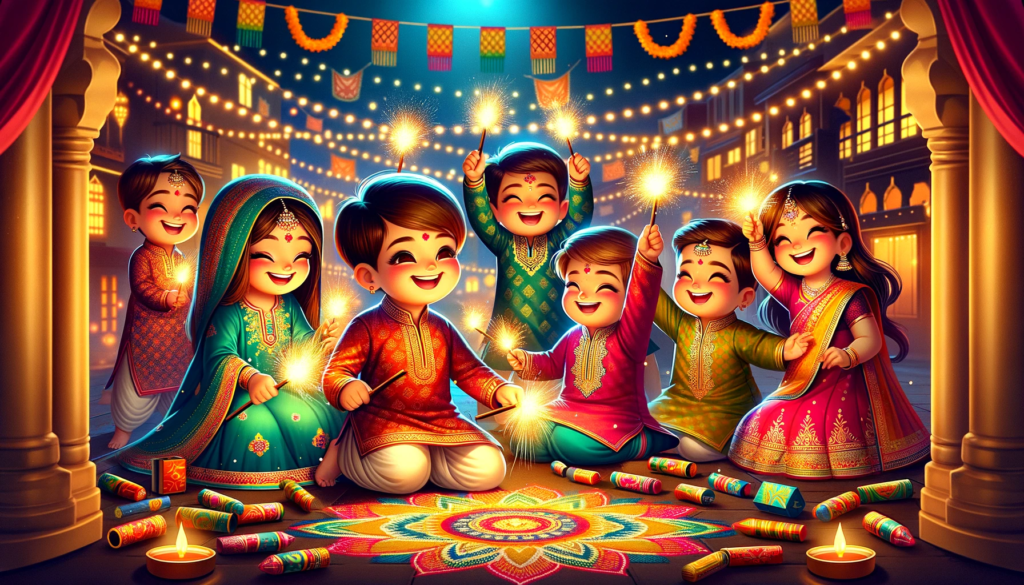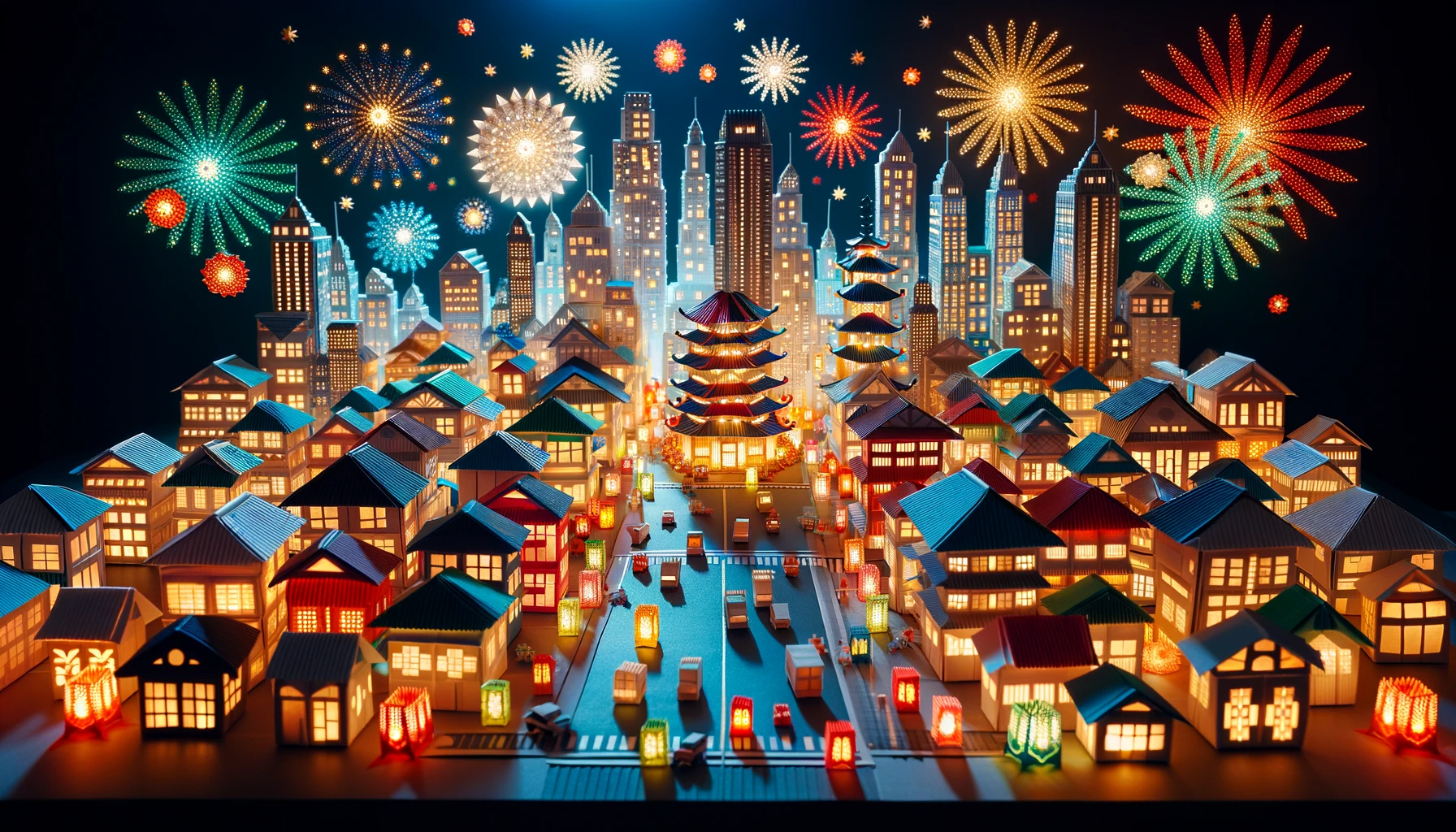Here are key points and essay on Diwali in English for class 5 to 10 students. Feel free to use for your school-work.
10 Lines on Diwali in English for class 5 and 6 students
- Diwali is known as the “Festival of Lights.” It is a bright and cheerful festival celebrated in India.
- Diwali lasts for five days. Each day has different fun activities and traditions.
- The festival symbolizes the victory of good over bad things. It teaches us to always choose to do good things.
- In the northern part of India, Diwali to celebrate the return of Lord Rama home after winning a battle against the demon king Ravana.
- People light small lamps called ‘diyas’ and candles. This makes homes and streets look like they are twinkling with stars.
- Rangoli are beautiful patterns made on the ground using colored powders or flowers. They make the entrance of homes look very pretty.
- Everyone dresses up in new clothes. Wearing bright and new clothes is part of the celebration.
- Fireworks light up the sky at night. They are loud and colorful, and kids love watching them.
- Delicious sweets and snacks are made and shared with family and friends. Exchanging sweets is a way of spreading happiness.
- Many families pray to Goddess Lakshmi for good health, wealth, and happiness. She is the goddess of prosperity.
10 Points on Diwali for students of class 7 and 8

- Diwali, also known as Deepavali, is popularly known as the “Festival of Lights.” It’s one of the most significant festivals in Indian culture.
- Diwali is celebrated over five days, with each day having its own significance and set of traditions. It starts with Dhanteras, followed by Naraka Chaturdasi, Diwali, Govardhan Puja, and finally, Bhai Dooj
- It is a Hindu festival that symbolizes the victory of light over darkness, good over evil, and knowledge over ignorance. People from other religions also celebrate Diwali in various ways.
- Different regions in India celebrate Diwali for different reasons. In North India, it marks the return of Lord Rama to Ayodhya after defeating Ravana. In South India, it’s associated with Lord Krishna’s victory over the demon Narakasura.
- People light small oil lamps called ‘diyas’ and candles around their homes. This act represents light driving away darkness.
- Colorful patterns called ‘rangoli’ are made at the entrances of homes using colored rice, dry flour, colored sand, or flower petals. It’s a way to welcome guests and a sign of good luck.
- Wearing new clothes and jewelry is a significant part of the celebration, symbolizing a fresh start.
- Fireworks are a major attraction of Diwali, with people of all ages enjoying them. However, it’s important to be safe and considerate about noise and air pollution.
- Families prepare and share a variety of sweets and savory dishes. Exchanging sweets with neighbors, friends, and family is a common practice.
- Many people perform a ‘puja’ or worship, especially to Goddess Lakshmi, the goddess of wealth and prosperity, seeking her blessings for the year ahead.
Diwali essay in 200 words for class 5 to 8

Diwali: The Festival of Lights
Diwali, also known as Deepavali, is one of the most awaited festivals in India. It’s called the Festival of Lights and is celebrated with great joy and enthusiasm. Diwali marks the triumph of good over evil, light over darkness, and knowledge over ignorance.
The festival lasts for five days, with each day having its own significance. It starts with Dhanteras, followed by Naraka Chaturdasi, Diwali, Govardhan Puja, and finally, Bhai Dooj. During Diwali, the night sky lights up with dazzling fireworks, creating a spectacle of colors.
Homes are cleaned and decorated with beautiful rangolis, made using colored powders, and lights. The lighting of diyas, small earthen lamps, is a significant part of the festival. These lamps, which are lit in every corner of the house, are a symbol of hope and joy.
Another exciting aspect of Diwali is the exchange of sweets and gifts. Families and friends share delicious sweets, symbolizing the spreading of sweetness and love. Children, especially, look forward to this part, as they get to eat a variety of tasty treats.
On the main day of Diwali, people worship Goddess Lakshmi, the goddess of wealth and prosperity, and Lord Ganesha, the god of wisdom and good fortune. This prayer, or ‘puja’, is a time for families to come together and seek blessings for the coming year.
Diwali is not just a festival; it’s a time for reunions, sharing happiness, and creating memories that last a lifetime. It teaches us the importance of light, goodness, and the joy of giving.

